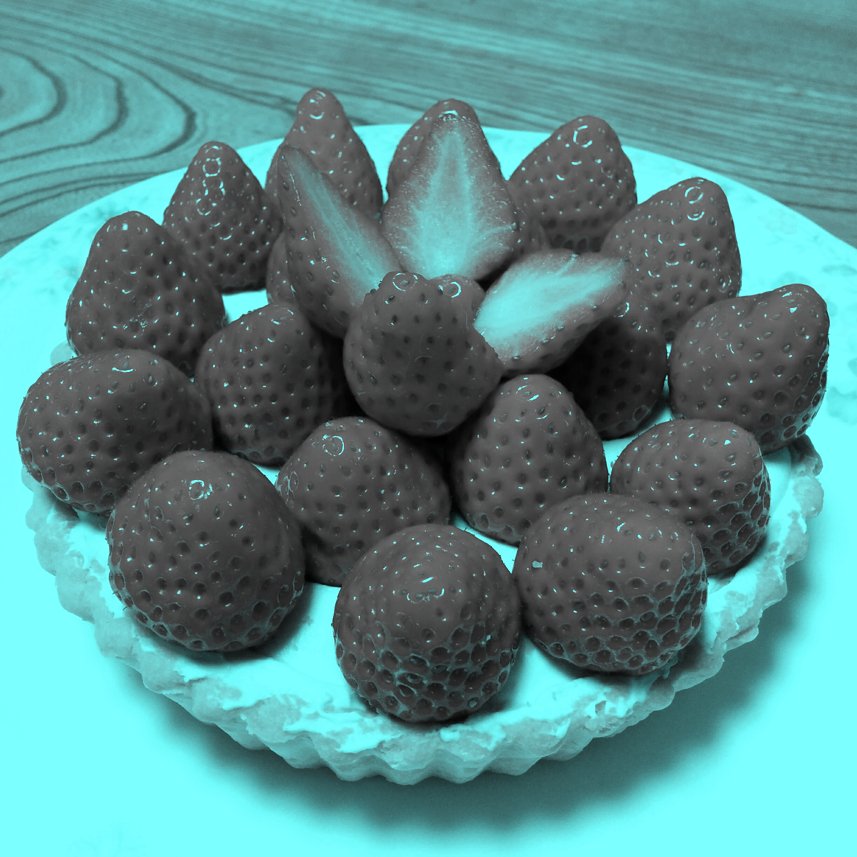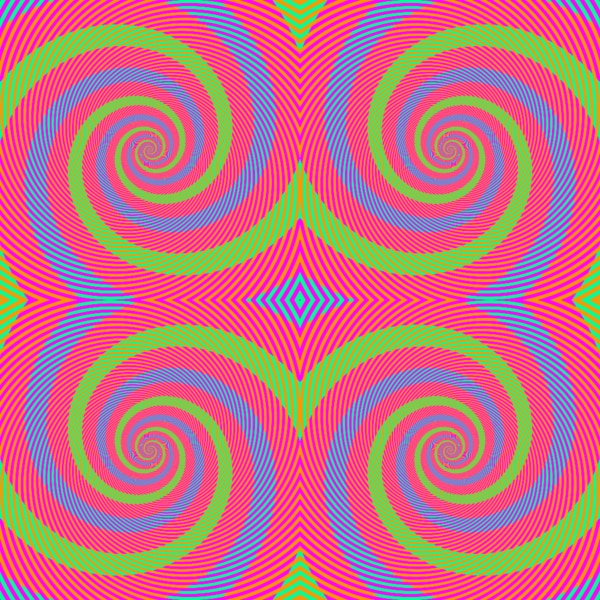Create a free profile to get unlimited access to exclusive videos, sweepstakes, and more!
These strawberries aren't red. Seriously. They aren't.

Come, let me destroy your brain: The strawberries in this photo are not red:
Seriously. In fact, there are no red pixels in that photo at all. At least not in the way you’d think of as “red.”
This is a fantastic optical illusion, brought to us by the master optical illusionist Akiyoshi Kitaoka. And yes, I can prove it’s an illusion quite simply. I opened the picture in Photoshop and sampled the color of one of the strawberries, picking where it looked very red to my eye. I then made a simple rectangle and filled it with that color.
Here it is:
Surprise! It looks gray, doesn’t it? It should because it is. The RGB values for it are 75, 77, 76, an almost perfect balance creating dark gray. If you have Photoshop, try it. Click anywhere, and you won’t find any pixel that is predominantly red.
So, what’s going on? The photo, it turns out, is using your own brain against you.
This psychological jujutsu takes advantage of process called color constancy. In a nutshell, it’s your brain’s way of compensating to allow us to see more or less correct color under different lighting conditions. Strawberries look red because they predominantly reflect red light. The amount of red light we see from that strawberry then will also depend on the color of the light hitting it. If the illumination source is white, there’s more red light to reflect than if the illumination source is blue.
If our brains didn’t compensate for this, life would be very confusing! Something that looks red indoors might look different if you see it outside, because fluorescent lights (say) have a different color than the Sun.
What our brains do is actually quite clever: They try to figure out what color the illumination is by comparing colors in the scene. We have cells in our retinae called cones that perceive color, and there are three kinds: one that is sensitive to red, another to green, and a third to blue. Their color sensitivity overlaps a bit, so a red cone can “see” a little into the green, and the green can see a little into the blue. By comparing the signals from the three cones, the brain can make an attempt at determining the color of the incoming light.
It then subtracts that color from what you see, hopefully compensating for any color imbalance. So, if the incoming light is red, it balances that by downplaying red in the perceived colors of the scene.
In the photo of the strawberries, our brains look at the overall color of the scene and determine that the incoming light is cyan (blue-green). The strawberries are actually dark gray, remember, the color equal parts red, green, and blue. When the brain subtracts the blue and green away, what’s left? Red! Kitaoka has many more examples of this on his website.
I love stuff like this. You’d swear you’re seeing red, but you’re not, at least not really. It’s what your brain thinks it’s seeing, but that’s after some very duty heavy processing of the data.
This is why I always smile ruefully when I hear someone say, “I know what I saw!” Oh? Are you sure? Because everything we see is interpreted by our brain, and there are many steps involved between the actual scene and our minds perceiving it. And every step is a chance for a misstep.
Still don’t believe me? Then let me show you my favorite illusion of all time, also by Kitaoka:
Tell me, how many colors do you see in the spiral?
I see green, blue, magenta, and orange. Except no: the green and blue spirals are the exact same color! We interpret colors in part by comparing them to colors around them, and the orange and magenta spirals are distorting how you see the others, throwing your brain off. The illusion is impossible to overcome unless you zoom in on the drawing and can pick out the individual colors (which I did in the link above; try it yourself if you have image manipulation software like Photoshop or Gimp).
Remember this the next time someone claims to see a UFO, or Planet X, or some other highly unlikely thing. In this case, fooling your brain is as easy as subtracting away a color, and your brain falls for it utterly. There are a million other ways to trip up your perception, too.
The lesson? What you see is never what you actually get.
Postscript: If your brain hasn’t melted completely away after all this, go visit Kitaoka’s website. Your concept of reality will be destroyed.





























